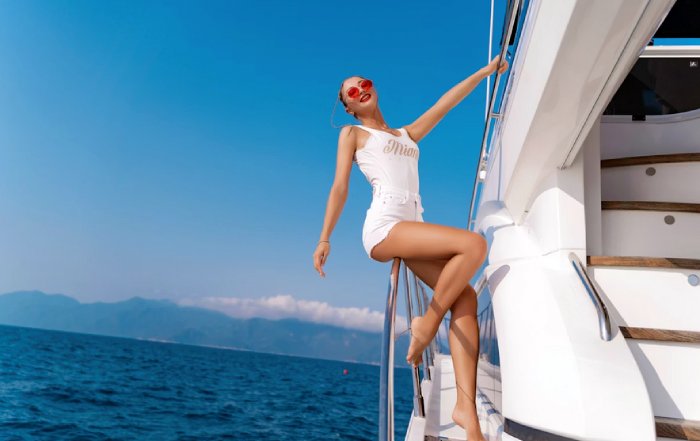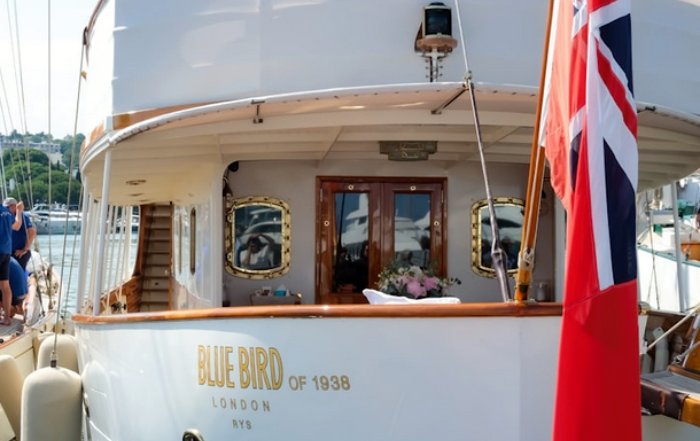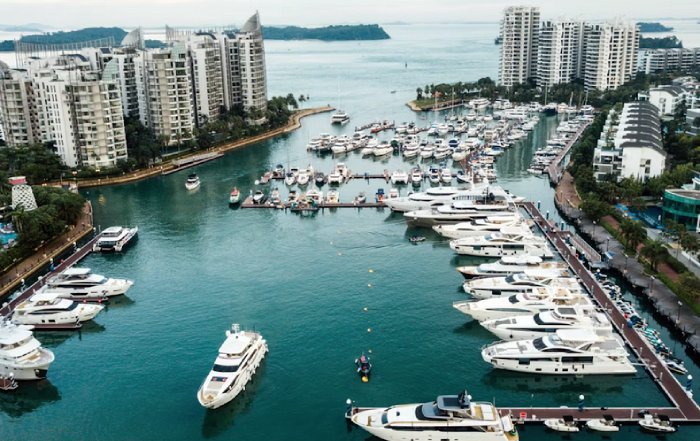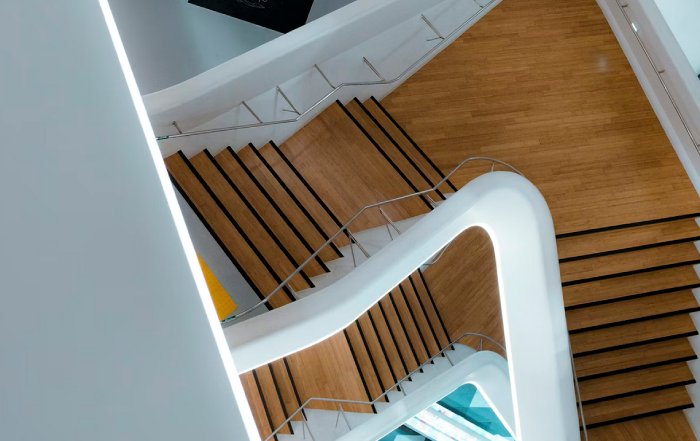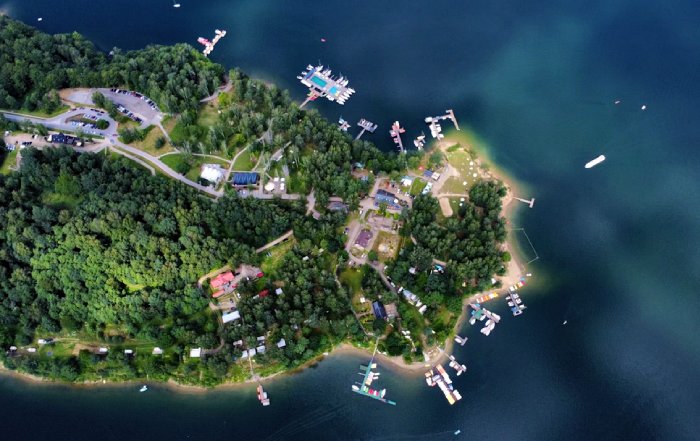In recent years, the global yachting sector has undergone a profound transformation shaped by shifting lifestyle priorities, technological advancements, and a heightened demand for wellness-centered travel. This year, the intersection of luxury hospitality and holistic well-being has become one of the most influential forces redefining the expectations of discerning yacht owners and charter guests. The modern yacht is no longer simply a vessel for leisure or exploration; it has become a curated sanctuary engineered to nurture body, mind, and spirit, offering restorative experiences that rival or surpass the finest resorts on land.
The editorial perspective of yacht-review.com has closely followed this transformation through comprehensive coverage of design, lifestyle culture, and maritime innovation. Readers exploring the platform’s insights—particularly across its dedicated pages on design, cruising, and lifestyle—have recognized how the industry’s shift toward wellness has ushered in a new era of sophistication and intentionality in yacht construction and onboard programming. This shift mirrors broader movements in global luxury travel across the United States, Europe, Asia, and Oceania, where affluent travelers increasingly seek restorative journeys over purely indulgent ones.
The rise of spa-focused yachting has been accelerated by converging global factors: increased stress levels, remote-working cultures, and a growing body of scientific research supporting the long-term benefits of preventative health practices. As a result, leading yacht builders and management companies such as Feadship, Lürssen, and Benetti have reimagined what wellness spaces can look like at sea. They have integrated advanced technologies, specialized materials, and multidisciplinary design to create immersive sensory retreats supporting hydrotherapy, mindfulness training, integrative medical consultations, and fitness programs modeled after the world’s leading wellness institutions. These innovations align with trends documented by respected publications such as Condé Nast Traveler and National Geographic.
Within this context, spa-focused yachts represent the next frontier of experiential travel. Charters across the Mediterranean, Caribbean, South Pacific, and even the Norwegian fjords now emphasize wellness as a central theme. Guests seek journeys built around rejuvenation, longevity, and intentional restoration. Reviews and vessel features highlighted across yacht-review.com, including its pages on reviews and boats, demonstrate how onboard wellness capabilities have become a core criterion when evaluating modern yachts.
The Historical Shift Toward Holistic Sea Travel
While relaxation and comfort have always been central to luxury yachting, the presence of robust, resort-style wellness facilities aboard private vessels is a relatively recent development. Historically, yacht owners prioritized entertainment spaces, lavish accommodations, and high-performance engineering. The integration of structured wellness environments was limited until the late 20th century, when the influence of luxury hospitality began to shape yacht design more directly.
A review of early yacht-building practices, explored in depth through the history section of yacht-review.com, reveals the dramatic evolution of the industry. Classic mid-century yachts embodied craftsmanship and fresh-air enjoyment but lacked the specialized spaces found aboard contemporary vessels. It was not until the 1990s and early 2000s that the first wave of fitness rooms and spa-inspired spaces entered the yachting world, driven by the expanding influence of global resort wellness culture.
As wealth increased in regions such as the United States, United Kingdom, Germany, China, and Singapore, owners began prioritizing health optimization alongside traditional luxury. Simultaneously, advancements in naval architecture allowed designers such as Espen Øino, RWD, and Zuccon International Project to incorporate complex spa environments with stability, airflow, and acoustics capable of supporting therapeutic use. The broader movement toward longevity and sustainable living—often highlighted by institutions such as the World Economic Forum—reinforced these developments, making wellness a central design pillar rather than an optional enhancement.
The result has been a paradigm shift in how yachts are conceptualized, built, and experienced. Guests no longer view yachting as a temporary escape; instead, they see it as a platform for personal transformation. Spa-focused yachts, therefore, represent a natural evolution of global wellness culture, and their emergence signals the maturation of luxury travel into a lifestyle-driven pursuit.
Designing the Modern Sea Spa
The creation of spa-focused spaces aboard luxury yachts requires exceptional design precision and interdisciplinary expertise. Unlike traditional interiors emphasizing aesthetics and functionality, wellness environments must address acoustics, therapeutic lighting, air quality, thermal regulation, and the healing properties of water. This has led to collaborations between naval architects, interior designers, wellness consultants, medical practitioners, and material scientists.
Contemporary wellness yachts may feature hydrotherapy pools, infrared and Finnish saunas, salt-therapy suites, sensory showers, meditation rooms, cryotherapy chambers, and flotation tanks. These features mirror those found in elite hospitality brands such as Aman, Six Senses, and Four Seasons, which are widely recognized for setting global benchmarks in wellness luxury. The technological sophistication behind these offerings is frequently covered in yacht-review.com's technology section, where engineering advancements in comfort, stabilization, and environmental control are regularly explored.
Biophilic design plays a crucial role in shaping modern sea spas. Architects integrate natural textures, organic materials, neutral palettes, and expansive glazing to foster emotional connection with the marine environment. Research from the Global Wellness Institute supports the psychological and cognitive benefits of nature immersion, reinforcing the importance of these design philosophies in yachting.
To maintain therapeutic integrity at sea, engineering systems must minimize vibrations, noise, and temperature fluctuation. Advanced stabilization technologies allow guests to enjoy spa treatments without disruption, even during movement between destinations. Spa practitioners are increasingly trained in maritime-specific therapy protocols, ensuring treatment quality remains consistent with world-class land-based facilities.
Customization remains a hallmark of modern wellness yachts. Many vessels include modular spa suites that can transform into private executive retreats or couple-centered sanctuaries. This commitment to personalization reflects broader luxury market trends, as covered extensively on the yacht-review.com business page, where hyper-customization has become a dominant force shaping buyer expectations in 2025.
Evolution of Wellness in Luxury Yachting
From Classic Vessels to Transformative Sea Sanctuaries
Classic Era
Traditional yachts focused on craftsmanship and fresh-air enjoyment with limited specialized wellness spaces.
First Wave
Introduction of fitness rooms and spa-inspired spaces influenced by global resort wellness culture.
Design Revolution
Advanced naval architecture enables complex spa environments with proper stability, acoustics, and airflow.
Medical Wellness Integration
Resort-caliber facilities with longevity programs, biomarker diagnostics, and holistic therapy integration.
Future Transformation
AI-driven wellness, zero-emission propulsion, regenerative design, and unprecedented personalization.
Key Innovation Categories
Global Charter Trends and the Demand for Wellness at Sea
As the charter market expands worldwide, wellness-centric itineraries have emerged as one of the most sought-after experiences. Clients from the United States, United Kingdom, Germany, Canada, Australia, Singapore, and China increasingly request vessels equipped with advanced spa facilities, medical wellness programs, and crews trained in holistic disciplines. Charter brokers and operators confirm that wellness is now one of the leading decision factors for selecting a yacht.
The Mediterranean remains the premier region for restorative charters. Its serene anchorages, temperate climate, and rich cultural heritage create ideal environments for wellness retreats. Guests enjoy spa rituals on board while balancing the experience with coastal hikes, nature immersions, and regionally inspired cuisine. Insights into these itineraries are further explored within yacht-review.com's travel and global sections.
The Caribbean and Bahamas complement the Mediterranean by offering winter-season wellness opportunities. Charter guests gravitate toward beach yoga, marine-therapy activities, reef exploration, and restorative sun-soaked days under the region’s turquoise skies. The growing global interest in ocean-based wellness, often highlighted by the BBC, supports the continued rise of Caribbean restorative travel.
Across Asia, demand for spa-focused charters has expanded rapidly. Thailand, Indonesia, Japan, Singapore, and South Korea offer idyllic backdrops for wellness cruising, blending ancient healing traditions with contemporary luxury. Meanwhile, northern Europe—particularly Norway, Sweden, Denmark, and Finland—has cultivated a reputation for thermal spa journeys that draw upon Nordic traditions emphasizing minimalism, health cycles, and deep connection to nature. These developments align strongly with yacht-review.com's cruising editorial coverage, highlighting how regional influences shape the future of travel at sea.
Integrating Medical Wellness and Holistic Therapies Onboard
One of the most transformative shifts in wellness yachting is the integration of advanced medical-wellness services. Vessels now frequently partner with medical institutions to offer longevity programs, biomarker-based diagnostics, and evidence-driven treatment modalities. Wellness directors, physiotherapists, osteopaths, nutritionists, and personal trainers collaborate to create custom health pathways tailored to guest goals and biometric data.
This multidisciplinary framework mirrors models used by leading institutions such as Mayo Clinic and Cleveland Clinic, which advocate for a holistic blend of lifestyle medicine and preventative care. Travelers familiar with research shared by the National Institutes of Health expect comparable quality in leisure settings, prompting a new generation of yachts equipped to deliver science-backed well-being.
Services may include IV vitamin therapy, oxygen treatments, peptide protocols, metabolic testing, and performance-based fitness programs. These contemporary medical offerings coexist harmoniously with holistic traditions such as Ayurveda, Thai medicine, Reiki, and sound therapy, giving guests access to a full spectrum of healing modalities.
Nutrition further enhances the medical wellness experience. Chefs trained in longevity-oriented cuisine create menus that promote detoxification, immune support, and metabolic balance using sustainably sourced ingredients. This evolution in culinary wellness is frequently highlighted in yacht-review.com's lifestyle and sustainability sections.
Mental wellness programming has become equally sophisticated. Meditation instructors, breathwork coaches, and sleep specialists curate experiences rooted in psychological research. Organizations such as the American Psychological Association emphasize the importance of stress reduction, validating the growing role of mental wellness at sea.
Sustainability as a Core Pillar of Wellness Yachting
Wellness and sustainability are now inseparable concepts in luxury maritime travel. Guests increasingly expect eco-conscious practices, prompting shipyards and operators to embrace hybrid propulsion, alternative energy solutions, and low-emission engineering. Quiet, environmentally responsible operation enhances the serenity essential to wellness environments and reduces environmental impact.
Shipyards such as Feadship, Heesen, and Oceanco have pioneered technological advancements that include battery storage systems, solar support, and heat-recovery engineering. These developments align with the environmental stewardship principles promoted by the United Nations Environment Programme.
Interior environments also reflect this shift. Designers favor natural materials, organic fabrics, and low-VOC finishes to improve air quality and tactile comfort. Spa products emphasize botanical formulas, biodegradable packaging, and ethical sourcing.
Wellness itineraries increasingly incorporate nature-based experiences, from reef-friendly snorkeling to conservation partnerships with organizations such as Ocean Conservancy and Blue Marine Foundation. These immersive activities deepen guest appreciation for ocean health, reflecting the values emphasized frequently on yacht-review.com's sustainability and news pages.
Family Wellness Experiences on Luxury Yachts
Modern yacht charters increasingly cater to multi-generational families who view wellness as a shared lifestyle pursuit. Parents and children seek experiences that nurture health, emotional connection, and education. This evolution is explored extensively on yacht-review.com’s family page.
Family spas now offer age-appropriate treatments for younger guests, teen-focused skincare, and guided mindfulness programs designed to foster emotional resilience. Physical wellness activities—such as paddleboarding, snorkeling, guided marine exploration, and yoga—encourage active living and create shared memories rooted in nature immersion. Research from the Centers for Disease Control and Prevention supports these lifestyle benefits.
Family culinary wellness has also matured. Chefs collaborate with nutritionists to accommodate dietary needs and lead interactive cooking sessions that promote balanced living across generations.
Mental and emotional wellness remains equally important. Digital-detox programs, storytelling sessions, and creative mindfulness workshops help families disconnect from daily pressures and reconnect with one another in meaningful ways.
Technological Innovations Enhancing Wellness at Sea
Technology has rapidly become one of the greatest enablers of modern wellness at sea. Intelligent environmental control systems regulate air purity, humidity, temperature, and lighting to maintain optimal therapeutic conditions. Circadian lighting supports sleep quality and emotional balance, echoing research promoted by the International WELL Building Institute.
Hydrotherapy technologies have advanced significantly. AI-enhanced water systems enable precise control over pressure, mineral content, and sensory effects. VR wellness pods, immersive sound chambers, and meditative virtual environments offer cognitive restoration influenced by digital therapy trends documented by the Forbes Travel Guide.
Wearable health technology integrates seamlessly into personalized wellness programs, allowing practitioners to tailor treatments according to real-time biometric insights. Engineering innovations—including hydrodynamic hull design and next-generation stabilization—ensure spa experiences remain undisturbed even in open water. These developments frequently appear within yacht-review.com's technology coverage.
Cultural Influences and Regional Preferences
Cultural traditions heavily shape wellness yachting. Mediterranean philosophies emphasize herbal treatments, slow living, and nature-inspired design. Nordic traditions influence thermal suites, cold plunges, and minimalist aesthetics. Asian rituals introduce onsen bathing, Thai massage, Ayurveda, and traditional Chinese medicine. Meanwhile, North American and Australian travelers often seek fitness-integrated voyages that blend adventure with holistic restoration.
These cultural nuances create a rich wellness landscape that appeals to an international clientele and underscores the global relevance highlighted within yacht-review.com’s global and travel sections.
The Future of Spa-Focused Luxury Yachting
The coming decade will elevate spa-focused yachting into one of the most influential pillars of maritime luxury. Emerging trends point toward regenerative design, zero-emission propulsion, biophilic engineering, and eco-conscious materials that enhance both environmental and personal well-being.
AI-driven wellness programs, biometric learning systems, and immersive therapy technologies will allow for unprecedented personalization. Wellness yachts will increasingly support family travel, corporate retreats, longevity tourism, and specialized medical journeys.
Above all, the future of wellness yachting will be defined by depth, meaning, and transformation. As luxury travelers continue to seek environments that nurture health and emotional well-being, spa-focused yachts will stand at the forefront of experiential, responsible, and deeply restorative travel. Through its coverage on reviews, boats, design, and every facet of maritime culture, yacht-review.com remains committed to documenting this evolution with expertise, insight, and global perspective.

